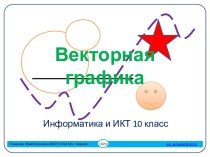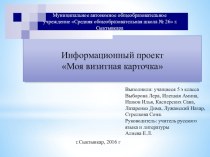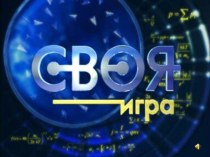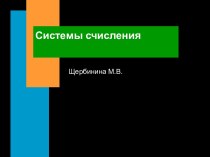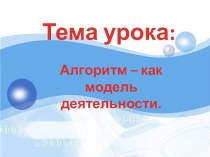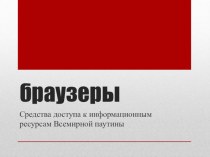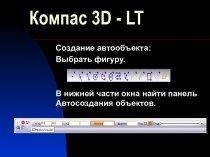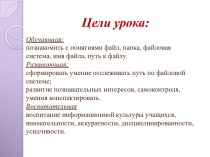- Главная
- Разное
- Бизнес и предпринимательство
- Образование
- Развлечения
- Государство
- Спорт
- Графика
- Культурология
- Еда и кулинария
- Лингвистика
- Религиоведение
- Черчение
- Физкультура
- ИЗО
- Психология
- Социология
- Английский язык
- Астрономия
- Алгебра
- Биология
- География
- Геометрия
- Детские презентации
- Информатика
- История
- Литература
- Маркетинг
- Математика
- Медицина
- Менеджмент
- Музыка
- МХК
- Немецкий язык
- ОБЖ
- Обществознание
- Окружающий мир
- Педагогика
- Русский язык
- Технология
- Физика
- Философия
- Химия
- Шаблоны, картинки для презентаций
- Экология
- Экономика
- Юриспруденция
Что такое findslide.org?
FindSlide.org - это сайт презентаций, докладов, шаблонов в формате PowerPoint.
Обратная связь
Email: Нажмите что бы посмотреть
Презентация на тему Analysis and Design of Data Systems. Enhanced ER (EER) Mode. (Lecture 11)
Содержание
- 2. The EER model includes all the modeling concepts of the ER modelEnhanced ER (EER) Model
- 3. An entity type can have numerous subgrupings
- 4. Subclasses and Superclassessubclasssuperclass
- 5. SpecializationSpecialization is the process of defining a
- 6. Each entity that is a member of
- 7. Specific attributeSpecific relationshipFeatures of Subclasses
- 8. Reasons for including class/subclass relationships and specializations
- 9. GeneralizationGeneralization is a reverse process to Specialization
- 10. Generalization
- 11. Constraints on Specializations
- 12. By placing a condition on the value
- 13. If all subclasses in a specialization have
- 14. Disjointness constraint specifies that an entity can
- 15. If the subclasses are not constrained to
- 16. A total specialization constraint specifies that every
- 17. Shared sublassesA subclass with more than one
- 18. Specialization Hierarchies
- 19. UNION SubclassesShared SubclassVSUnion SubclassSuperclasses must all have the same keySuperclasses can have different keys
- 20. UNION SubclassesENGINEERING_MANAGER is a subclass of each
- 21. Скачать презентацию
- 22. Похожие презентации
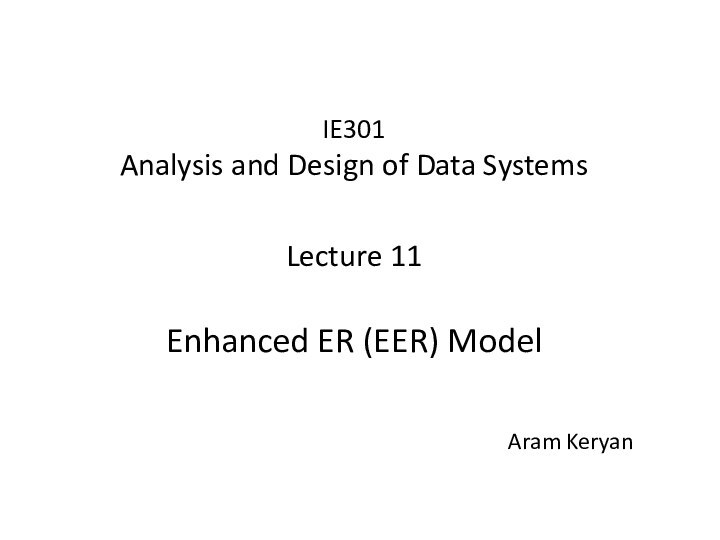

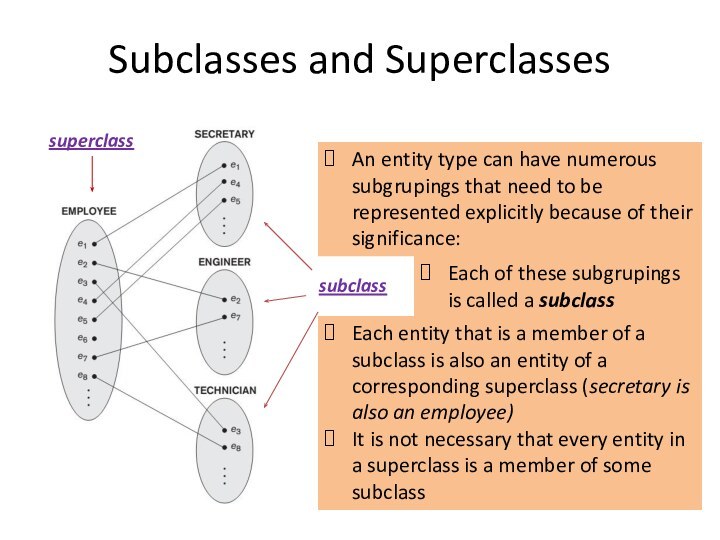
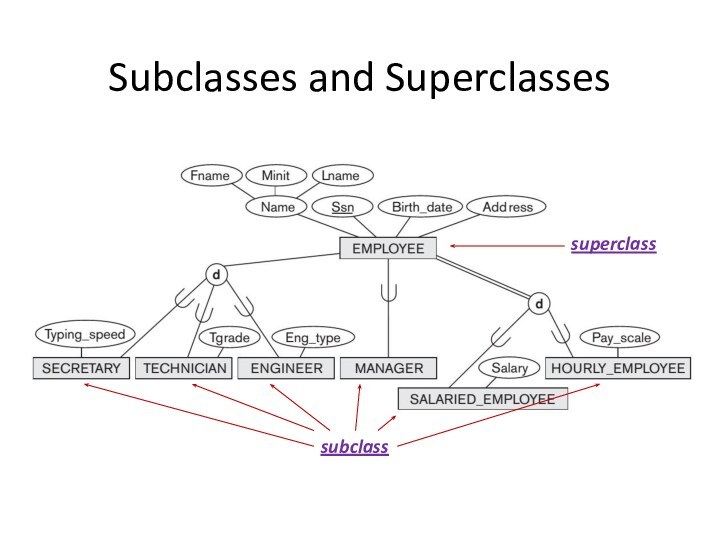
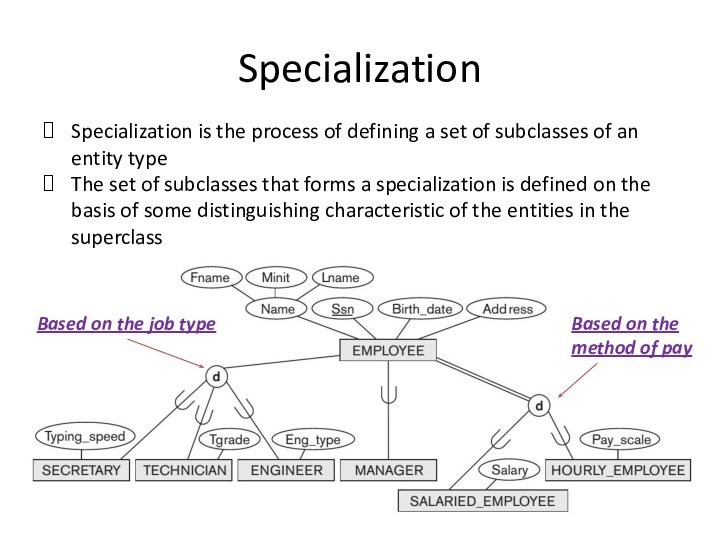
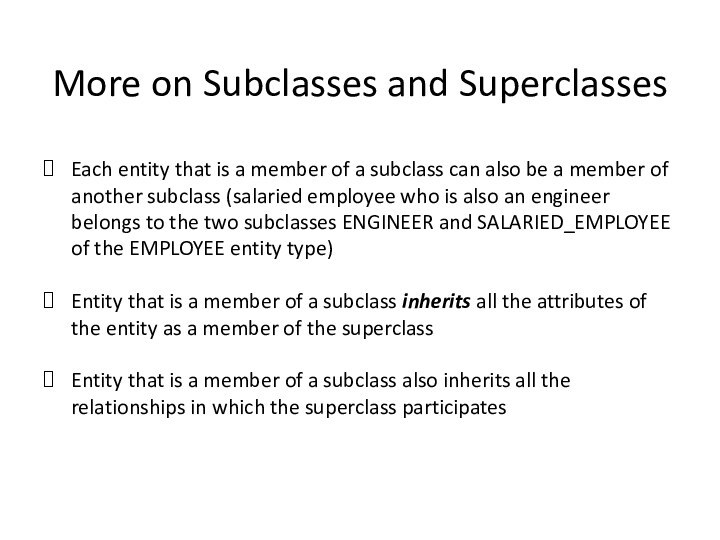
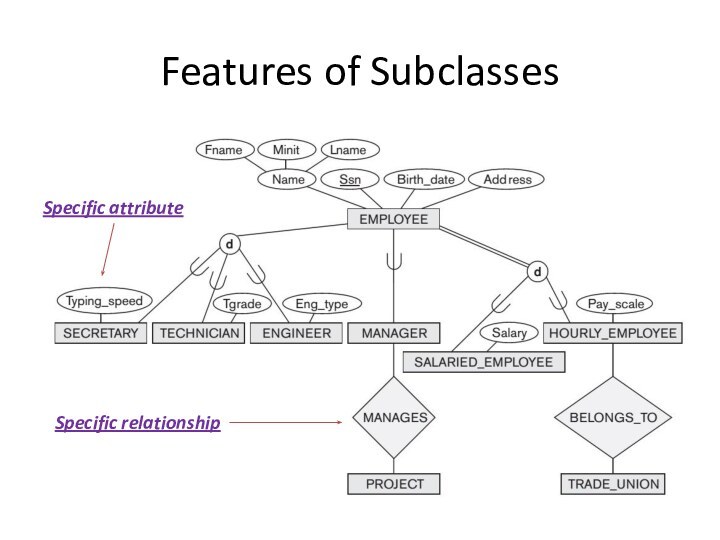
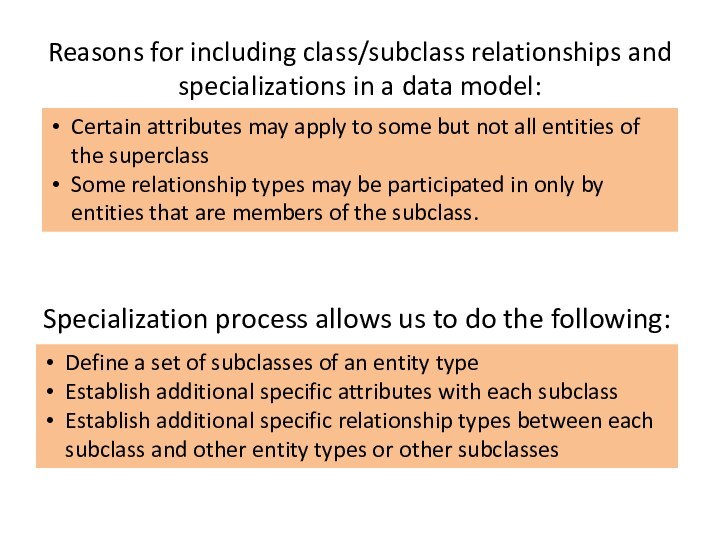
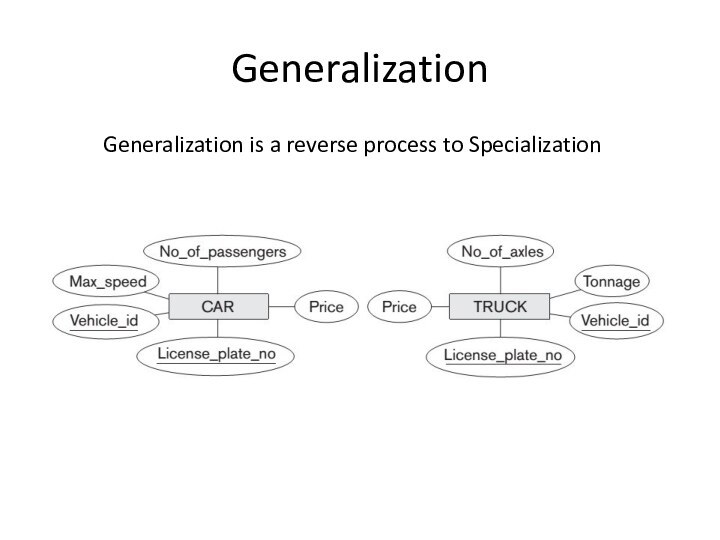
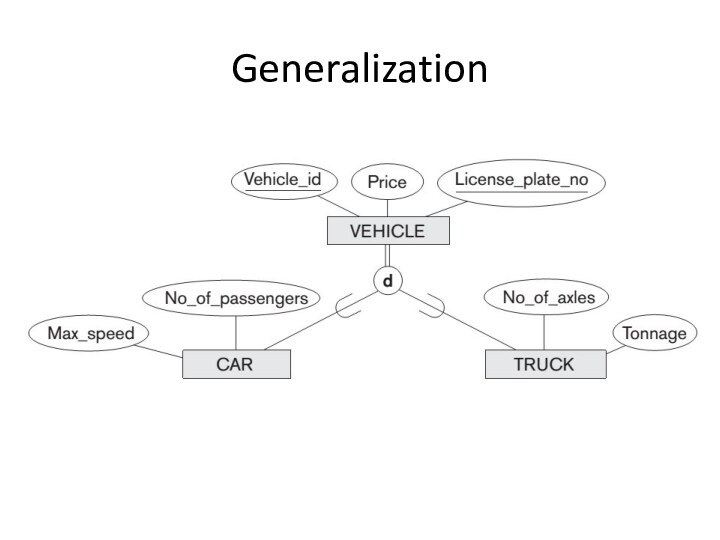
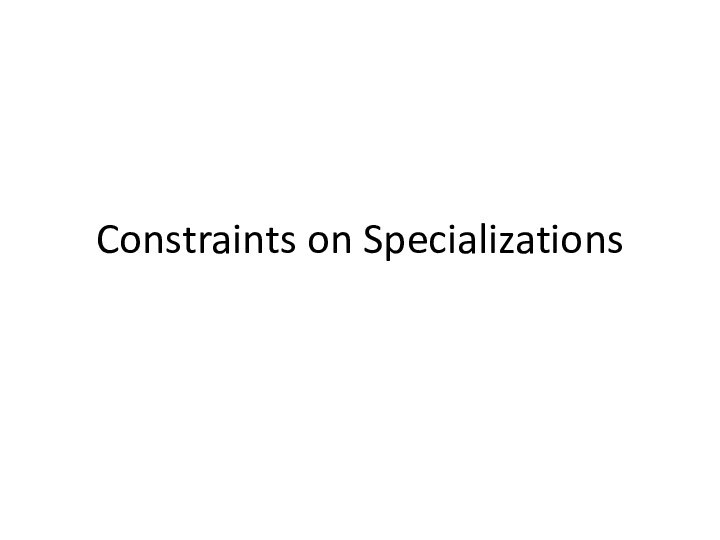
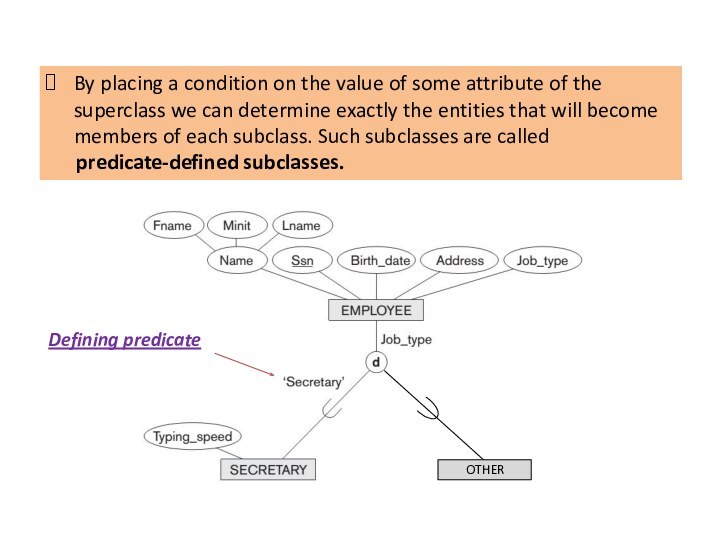
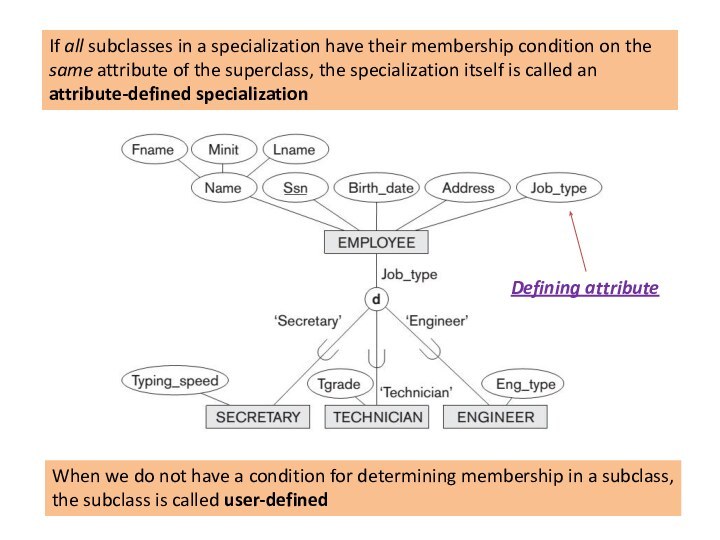
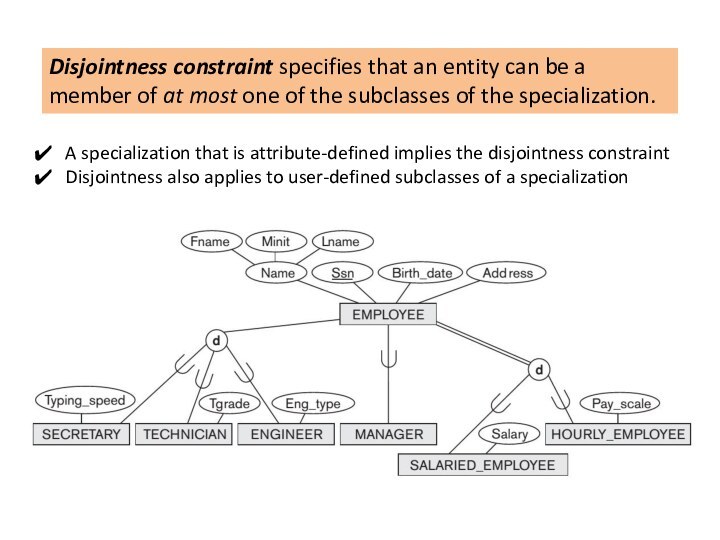
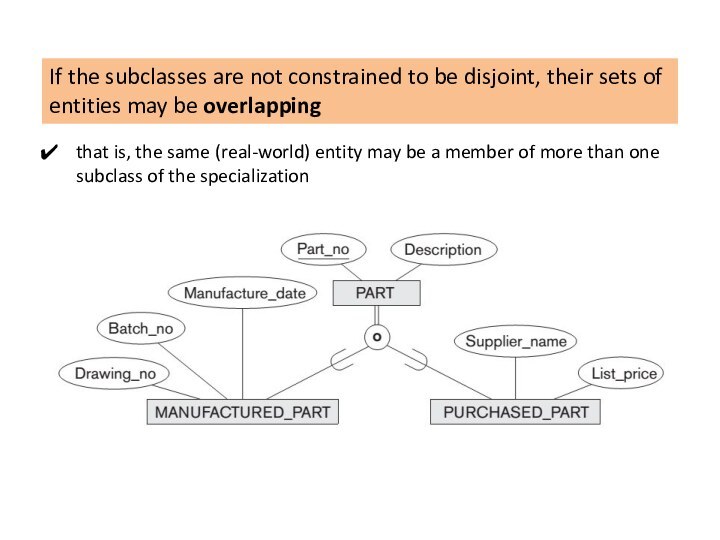
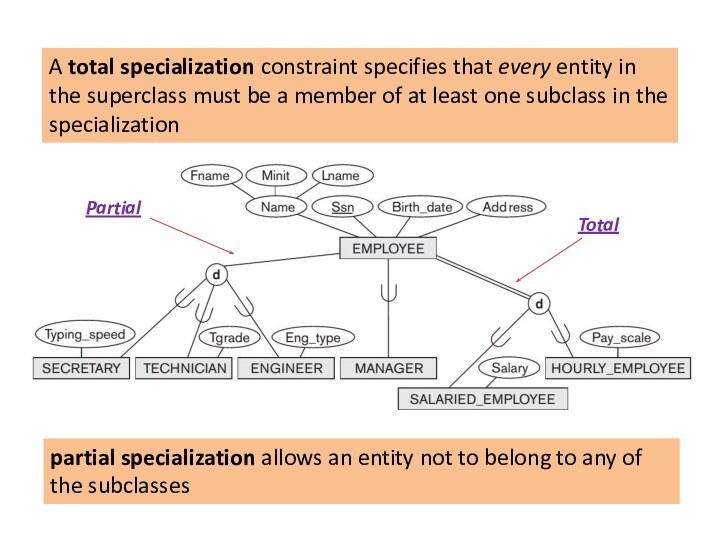
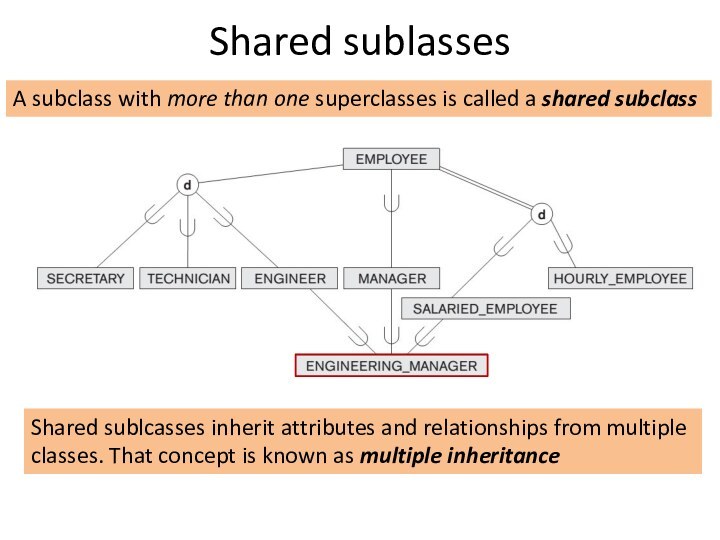
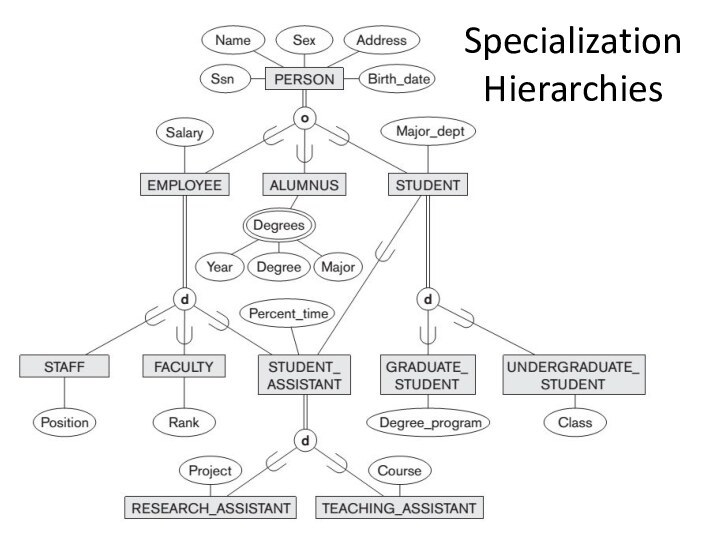
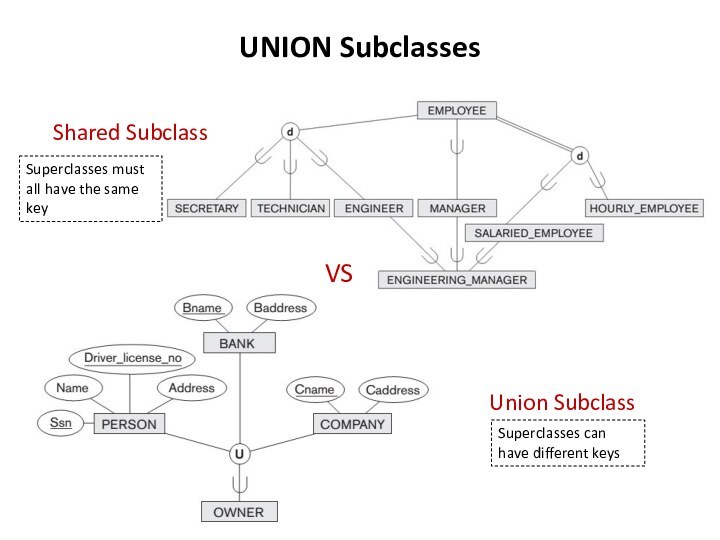
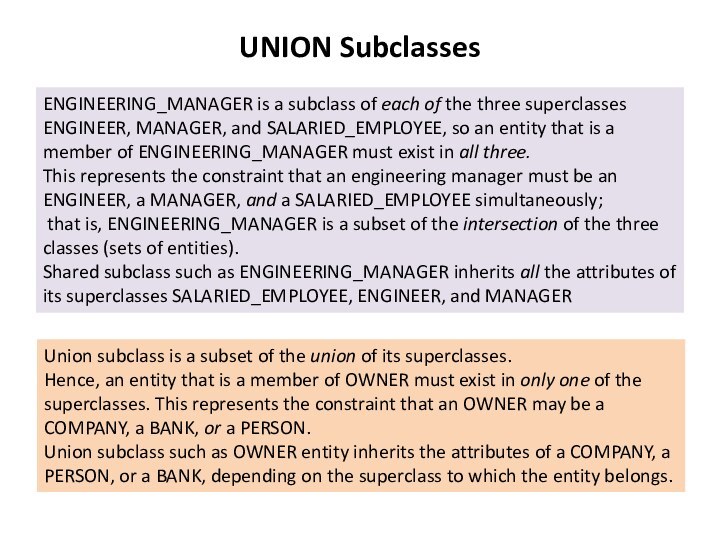
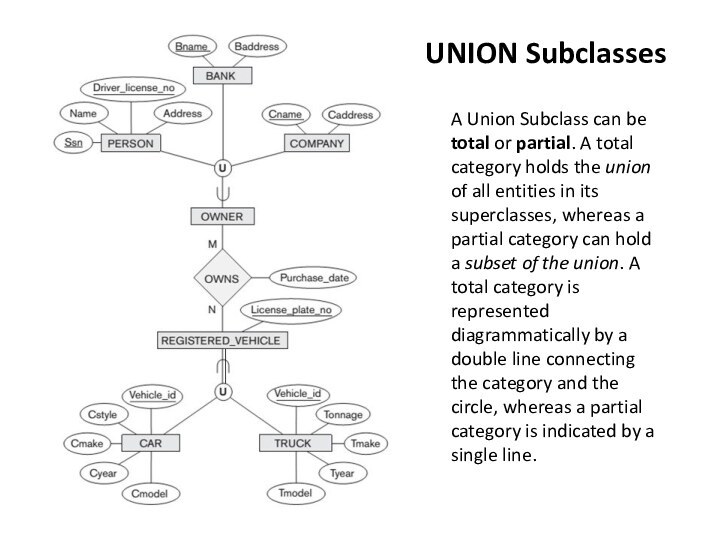
Слайд 3 An entity type can have numerous subgrupings that
need to be represented explicitly because of their significance:
Subclasses
and Superclassessuperclass
Each of these subgrupings is called a subclass
subclass
Each entity that is a member of a subclass is also an entity of a corresponding superclass (secretary is also an employee)
It is not necessary that every entity in a superclass is a member of some subclass
Слайд 5
Specialization
Specialization is the process of defining a set
of subclasses of an entity type
The set of subclasses
that forms a specialization is defined on the basis of some distinguishing characteristic of the entities in the superclassBased on the job type
Based on the method of pay
Слайд 6 Each entity that is a member of a
subclass can also be a member of another subclass
(salaried employee who is also an engineer belongs to the two subclasses ENGINEER and SALARIED_EMPLOYEE of the EMPLOYEE entity type)Entity that is a member of a subclass inherits all the attributes of the entity as a member of the superclass
Entity that is a member of a subclass also inherits all the relationships in which the superclass participates
More on Subclasses and Superclasses
Слайд 8 Reasons for including class/subclass relationships and specializations in
a data model:
Certain attributes may apply to some but
not all entities of the superclassSome relationship types may be participated in only by entities that are members of the subclass.
Specialization process allows us to do the following:
Define a set of subclasses of an entity type
Establish additional specific attributes with each subclass
Establish additional specific relationship types between each subclass and other entity types or other subclasses
Слайд 12 By placing a condition on the value of
some attribute of the superclass we can determine exactly
the entities that will become members of each subclass. Such subclasses are calledpredicate-defined subclasses.
OTHER
Defining predicate
Слайд 13 If all subclasses in a specialization have their
membership condition on the same attribute of the superclass,
the specialization itself is called an attribute-defined specializationDefining attribute
When we do not have a condition for determining membership in a subclass, the subclass is called user-defined
Слайд 14 Disjointness constraint specifies that an entity can be
a member of at most one of the subclasses
of the specialization.A specialization that is attribute-defined implies the disjointness constraint
Disjointness also applies to user-defined subclasses of a specialization
Слайд 15 If the subclasses are not constrained to be
disjoint, their sets of entities may be overlapping
that is,
the same (real-world) entity may be a member of more than one subclass of the specializationСлайд 16 A total specialization constraint specifies that every entity
in the superclass must be a member of at
least one subclass in the specializationpartial specialization allows an entity not to belong to any of the subclasses
Total
Partial
Слайд 17
Shared sublasses
A subclass with more than one superclasses
is called a shared subclass
Shared sublcasses inherit attributes and
relationships from multiple classes. That concept is known as multiple inheritance
Слайд 19
UNION Subclasses
Shared Subclass
VS
Union Subclass
Superclasses must all have the
same key
Superclasses can have different keys
Слайд 20
UNION Subclasses
ENGINEERING_MANAGER is a subclass of each of
the three superclasses ENGINEER, MANAGER, and SALARIED_EMPLOYEE, so an
entity that is a member of ENGINEERING_MANAGER must exist in all three.This represents the constraint that an engineering manager must be an ENGINEER, a MANAGER, and a SALARIED_EMPLOYEE simultaneously;
that is, ENGINEERING_MANAGER is a subset of the intersection of the three classes (sets of entities).
Shared subclass such as ENGINEERING_MANAGER inherits all the attributes of its superclasses SALARIED_EMPLOYEE, ENGINEER, and MANAGER
Union subclass is a subset of the union of its superclasses.
Hence, an entity that is a member of OWNER must exist in only one of the superclasses. This represents the constraint that an OWNER may be a COMPANY, a BANK, or a PERSON.
Union subclass such as OWNER entity inherits the attributes of a COMPANY, a PERSON, or a BANK, depending on the superclass to which the entity belongs.
